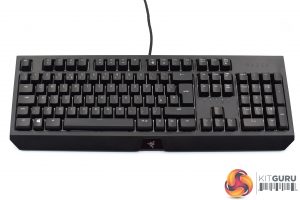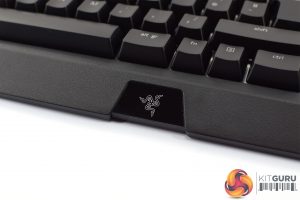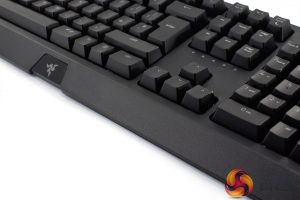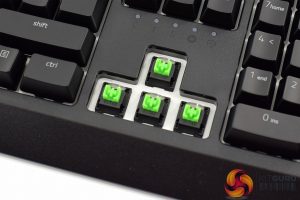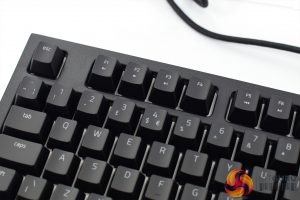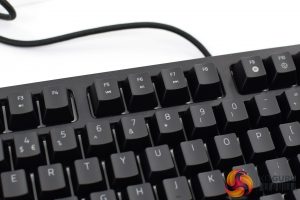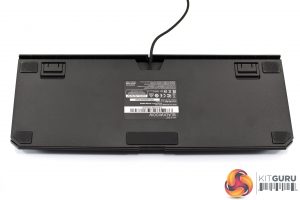The Razer BlackWidow comes in a box that will look familiar to anyone who has previously owned a Razer product – a large image of the keyboard itself is visible from the front, while the sides of the box are coloured in Razer's signature green.
Inside, we find a few extras including one quick start guide, one welcome card, and then three small stickers.
Getting our first look at the keyboard itself, on the surface it does look quite similar to the BlackWidow Chroma V2 in terms of the overall design language, as the keyboard retains the same sort of look with the sharp edges and extended front bezel.
This BlackWidow isn't just a Chroma V2 re-purposed, however, as there are no macro keys on the left-hand side of the board, while the num lock/scroll lock LEDs have moved underneath the INS/HOME/PGUP keys.
It's certainly not a revolutionary design, but the BlackWidow is very much meant to be a ‘back to basics' full size keyboard, and that is reflected in the overall look of the board.
The Razer logo is still positioned right in the middle of the keyboard's casing, and this is illuminated by the Chroma LEDs. That front edge of the keyboard also gives us a good look at the textured plastic shell of the board – there's no metal on the exterior of the BlackWidow, unlike the Huntsman Elite with its aluminium top plate, but there is in fact a metal plate inside the casing.
The keycaps are standard ABS fare, and while they are entirely conventional I wouldn't mind it if more companies decided to ship their boards with PBT caps for a more premium feel.
As for the switches, while they are Razer's own Green mechanical switches, these received an update last year giving the switches a new dual-wall design which should reduce key wobble and improve overall stability. Instead of a ‘floating keycap' style, the BlackWidow's switches are mounted to a white baseplate and sit slightly below the plastic top shell.
Unlike the Huntsman Elite or BlackWidow Elite, there are no dedicated media controls on the BlackWidow. Instead, volume and play/pause/skip functionality is mapped to the F1-F7 keys, while F9-F12 keys also have some secondary functions like adjusting the backlight brightness.
On the underside of the keyboard, there are five rubber pads to stop the keyboard slipping, while there are height adjustment feet in both of the top corners. Interestingly, these feet can be set to two different heights, allowing you to raise the board up a little, or a bit more depending on your preference. The top of the board also features a large cable channelling area so you can route the cable to either the left or right side of the board.
Lastly, this USB cable is braided and terminates in a single USB port – there's no USB or audio pass-through with the BlackWidow, so no need for any additional connectors.
 KitGuru KitGuru.net – Tech News | Hardware News | Hardware Reviews | IOS | Mobile | Gaming | Graphics Cards
KitGuru KitGuru.net – Tech News | Hardware News | Hardware Reviews | IOS | Mobile | Gaming | Graphics Cards




